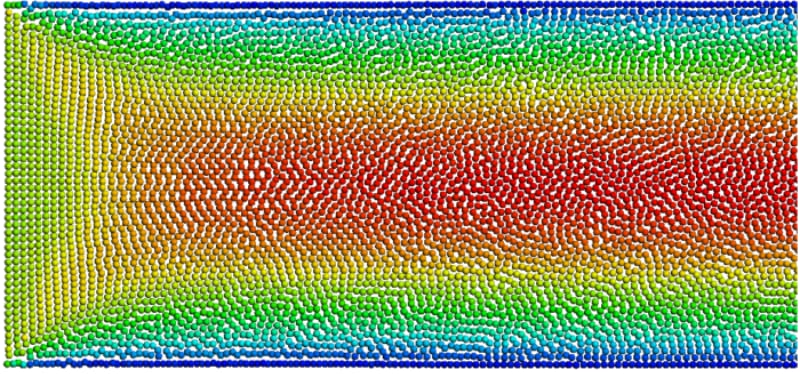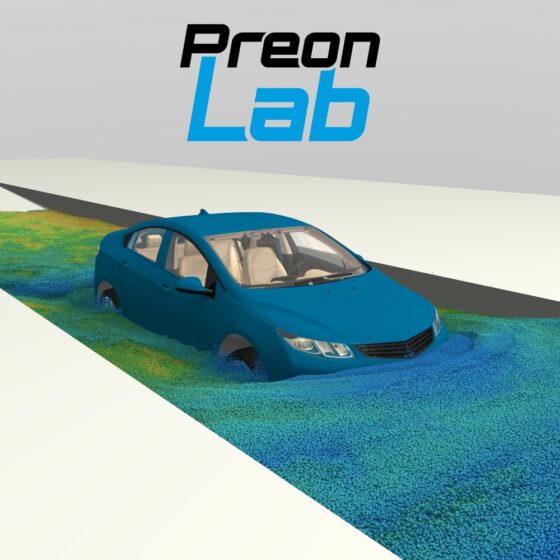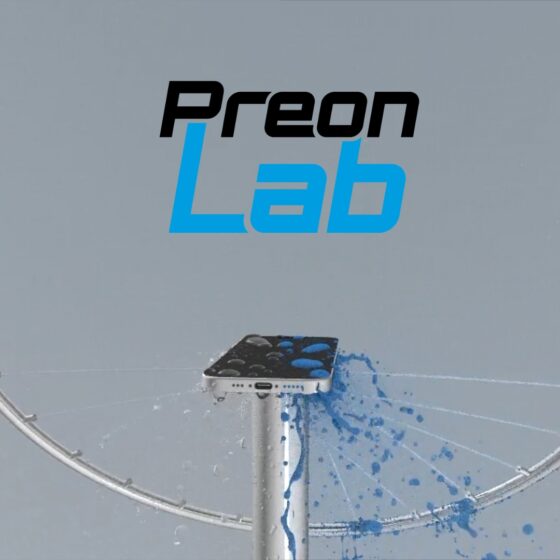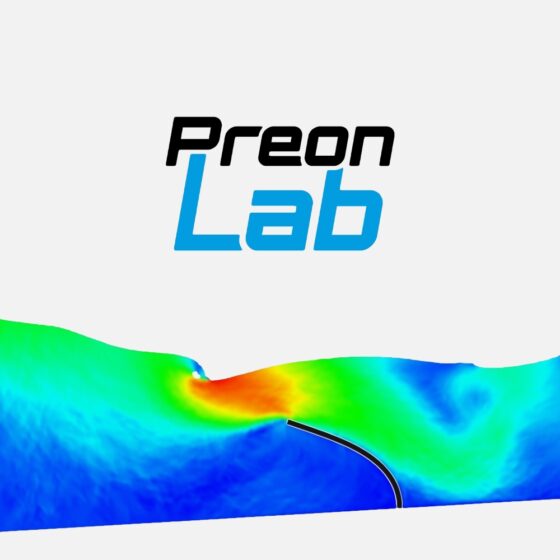Discussion: The Lagrangian Preon solver discretizes the fluid volume and solves the low-compressible Navier-Stokes equations in an implicit and transient manner. It should be noted that this dynamic system poses some numerical challenges with respect to perfectly constant boundary conditions, particularly when generating a constant mass flow rate with a constant velocity. In this case, there can be small deviations between the nominal mass flow rate given as input to the solver and the one generated by the source. For the transient simulation, this deviation fluctuates over time. Accordingly, simulation results are compared with the analytical results based on the effective mean velocity on the vertical line inside the fully developed region.
Test point 1 – Re = 10: Uin = 0.034 m/s, ρ = 910 kg/m3, µ = 0.3094 Pa·s
At this test point, the horizontal velocity profile at the vertical line x = 1.4m located in the hydrodynamically fully developed region is compared to the analytical result. The mean velocity at this line fluctuates between 0.034 m/s and 0.035 m/s which equals a maximum error of ~3 percent with respect to the Uin boundary condition. As can be seen in Fig. 4, the velocity profiles for both simulations, using 1mm and 2mm spacings, are very much similar. In both cases, the results lie within the theoretical curves corresponding to the minimum and the maximum mean velocity values owing to the boundary conditions. Furthermore, the velocity fields are also compared for the two spacings in Fig. 5.


























